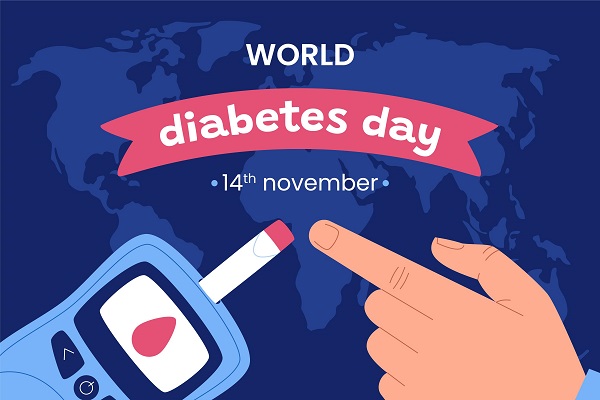Contributed by- Healthians Team
Pre-diabetes, commonly known as “borderline diabetes”, is a condition when blood sugar levels are higher than normal and very close to Type 2 Diabetes range. Pre-diabetes is a warning sign that you might be on a road to Type 2 Diabetes and gradually to cardiovascular (heart and circulation) disease.
In normal conditions, the pancreas produces a hormone called insulin which regulates the blood sugar levels in our body. But when the pancreas either fail to produce insulin or produce very little Insulin, not enough to regulate sugar it might show symptoms of being Pre-diabetic.
Approximately, one in three people with pre-diabetes tends to develop Type 2 Diabetes. If no lifestyle changes; including healthy eating, increased physical activity and losing weight, are initiated, the chances of developing Type 2 Diabetes are very high.
There are two pre-diabetes conditions:
- Impaired glucose tolerance (IGT) is where blood glucose levels are higher than normal but not high enough to be classified as diabetes.
- Impaired fasting glucose (IFG) is where blood glucose levels are escalated in the fasting state but not high enough to be classified as diabetes.
Symptoms Of Pre-diabetes
Your body might show you some alarming signs of having free glucose in your body. It might happen that these signs never interfere with your daily routine, but if you have maximum yeses then do consult your physician and get yourself screened.
- Being overweight – especially those who have excess weight around the waistline (i.e.: more than 94cm for men and more than 80cm for women).
- Being physically inactive.
- Having high triglycerides and low HDL-C (good cholesterol) and/or high total cholesterol.
- Having high blood pressure.
- Having a family history of Type 2 diabetes and/or heart disease.
- Women with Polycystic Ovarian Syndrome.
- Women who have had diabetes in pregnancy (gestational diabetes) or given birth to a big baby (more than 4kgs).
Diagnosing Pre-diabetes
Your doctor shall get you tested for either of the following tests. You can yourself also get these tests without any prescription if you have most of the symptoms mentioned above.
Fasting plasma glucose test: You won’t be allowed to eat for 8 hours before taking this blood test. The results are:
- Normal if your blood sugar is less than 100
- Pre-diabetes if your blood sugar is 100-125
- Diabetes if your blood sugar is 126 or higher
Oral glucose tolerance test: First, you’ll take the fasting glucose test. Then you’ll drink a sugary solution of glucose. Two hours after that, you’ll take another blood test. The results are:
- Normal if your blood sugar is less than 140 after the second test
- Pre-diabetes if your blood sugar is 140-199 after the second test
- Diabetes if your blood sugar is 200 or higher after the second test
HbA1c (or average blood sugar) test: This blood test shows your average blood sugar level for the past 2 to 3 months. Doctors can use it to diagnose pre-diabetes or diabetes or if you already know you have diabetes, it helps show whether it’s under control or not. The results are:
- Normal: 6% or less
- Pre-diabetes: 6% to 6.4%
- Diabetes: 6.5% or above
What To Do If You Are Pre-diabetic??
If you have been diagnosed with Pre-diabetes, it’s a wake-up call to change your lifestyle but it does not certainly mean that you will definitely have Type 2 Diabetes in later stages. If you are diagnosed with pre-diabetes, the treatment involves the same lifestyle changes that are recommended for people diagnosed with diabetes. For most, this will include regular physical activity, healthy eating and if necessary, losing weight.
People with pre-diabetes are also at increased risk of heart disease, so controlling blood pressure and blood cholesterol and triglycerides is also important.
Move a lot
To reduce the risk of Type 2 Diabetes the aim should be to increase your physical activity. This can be in any form; a 30-minute exercise schedule or a 45-minutes aerobic workout or a 30-minute run on the treadmill. The choice is yours. With upcoming ideas of dance, you can even join Zumba somewhere nearby or just put on the music and dance your heart out (Make sure no one’s watching you). Use the staircase of your office, walk to the grocery store, cycle whenever you can. There are so many ways to keep your carbs exhausted. But, always let your doctor know about your exercise pattern and ask if you have any limitations.
Reduce your Weight
If you are overweight, one definite change that shall lower your risk of being a Diabetic is reducing your weight. Follow simple exercise pattern and aim to gradually reduce your weight. In one study, people who had pre-diabetes and had lost 5% to 7% of their body weight, cut their chances of getting diabetes by 58%.
Eat Healthy
Changing your eating habits is also very essential as that will remarkably reduce your blood sugar level if you are a Pre-diabetic.
- Load up on vegetables, especially the less-starchy kinds such as spinach, broccoli, carrots, and green beans. Aim for at least three servings a day.
- Add more high-fiber foods into your day.
- Enjoy fruits in moderation – 1 to 3 servings per day.
- Choose whole-grain foods instead of processed grains – for example, brown rice instead of white rice.
- Instead of snacking on high-fat, high-calorie chips and desserts, choose fresh fruit, or whole-wheat crackers with peanut butter or low-fat cheese.
Sleep Peacefully
Not getting enough sleep regularly makes losing weight harder. A sleep shortfall also makes it harder for your body to use insulin effectively and may take you closer to Type 2 diabetes. Set good sleep habits. Go to bed and wake up at the same time every day. Relax before you turn out the lights. Don’t watch TV or use your computer or smartphone when you’re trying to fall asleep. Avoid caffeine after lunch if you have trouble sleeping.
Regular Monitoring
A regular check of your sugar levels will help you keep a tab on your various activities including eating, exercising and hence will motivate you to meet your goals faster. Prevention is always better than cure and with the power in your hand to reverse the chances of developing diabetes from pre-diabetes, it’s best to harness this power and opt for a healthier, happier life.




